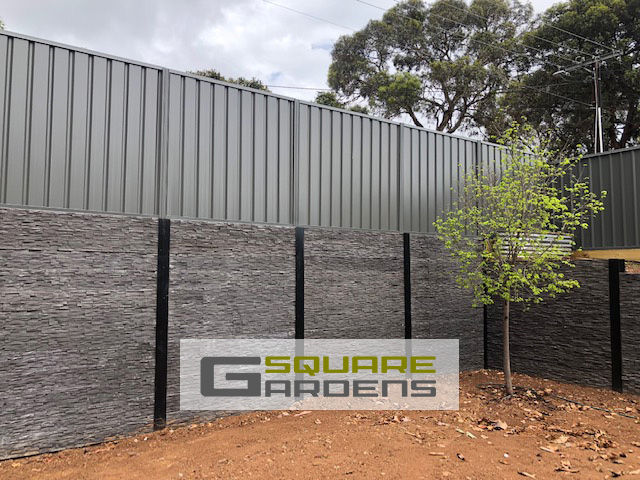Why Good Drainage Is Essential for Retaining Walls – Square Gardens Adelaide
- German H.

- Aug 10
- 3 min read
Updated: Aug 15
When most people think about building a retaining wall in Adelaide, they focus on the material — concrete sleepers, stone, timber, or blocks — and the construction method. But there’s one equally critical factor that often gets overlooked: drainage.
If your retaining wall doesn’t have proper drainage, it’s only a matter of time before problems begin — and those problems can lead to costly repairs, structural failure, and even safety risks.
So… where does that water go? Let’s break it down.
The Role of Drainage in Retaining Wall Stability
When rainwater, irrigation runoff, or groundwater collects behind a retaining wall, it increases the lateral pressure on the structure. Without proper drainage, this waterlogged soil pushes against the wall with far more force than it was designed to handle.
This can cause:
Bulging or leaning of the wall
Cracking in the structure
Erosion of the backfill
Complete wall collapse in extreme cases
The solution? A well-designed drainage system that allows water to escape instead of building up behind your wall.
Granular Backfill – Your First Line of Defence
One of the most effective ways to improve drainage is by using granular backfill behind the wall instead of compacted clay or poorly draining soils.
Granular backfill:
Allows water to pass through freely
Reduces hydrostatic pressure on the wall
Compacts easily for added stability
Increases sliding resistance to keep the wall in place
At Square Gardens, we recommend high-quality aggregates that allow water to move away from the wall quickly while maintaining excellent compaction.
Weepholes – Small Openings, Big Impact
Weepholes are small openings built into the wall itself to let water drain from behind the structure.
Standard walls may use smaller diameter weepholes (often 50–75 mm).
Larger retaining walls often benefit from 100 mm weepholes for faster drainage.
Spacing them evenly along the wall ensures uniform water release.
To keep the system effective, we install filters between the backfill and the weepholes to prevent clogging while still allowing water to escape.
Drainage Lines – Taking Water Away from the Wall
In addition to weepholes, perforated drainage pipes (commonly referred to as ag pipes) can be installed behind the wall to direct water to an outlet point.
The best practice is to:
Wrap the pipe in geotextile fabric to stop soil particles from entering
Bed it in a granular filter layer to maintain flow capacity
Connect it to the weepholes or another safe discharge point
This approach ensures water doesn’t just leave the wall — it leaves the site entirely, preventing pooling or erosion around the base.
Why Adelaide Retaining Walls Need Special Drainage Considerations
In Adelaide, we see a mix of clay-heavy soils and seasonal downpours, which makes proper drainage even more critical. Clay holds water for longer, meaning the pressure behind your wall can remain high for days or weeks after rainfall. Without the right drainage design, even the strongest retaining wall materials can be compromised.
Get Professional Drainage Advice Before You Build
Good drainage design isn’t just a nice-to-have — it’s a must-have for any retaining wall that’s expected to last. Whether you’re building a new wall or upgrading an existing one, Square Gardens can assess your site and recommend:
The right backfill material
The correct weephole spacing and size
Whether you need drainage pipes and where to place them
How to meet council and engineering requirements
📞 Call Square Gardens today on 0425 015 911 for expert advice on retaining wall drainage and construction in Adelaide.






Comments